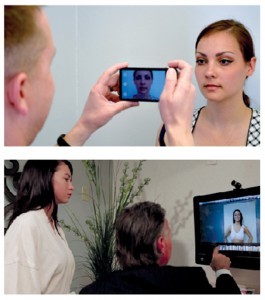The saying goes that ‘a picture is worth a thousand words’, but when it comes to your patients, before and after pictures with the aesthetic consultation are priceless.
In today’s exceedingly visual world, the right photos can communicate trust in your expertise and differentiate yourself from the next practice. You can help to inform a patient on what aesthetic treatment options may be most appropriate for them. More importantly, however, both clinician and patient can have an understanding of something very powerful: each other’s perception. Therefore, it has become increasingly important for aesthetic practices to place a larger emphasis on not only taking before and after photos, but on how they use these photos before, during and after the consultation.
Perceptions of attractiveness
One of the best tips that I have picked up during my consultant career, I credit to one of my most respected dermatologists, Kent Remington, MD, of Calgary, Canada.
While scheduling the consult, Dr Remington has his staff instruct his patients to bring in a photo of when they ‘loved what they looked like’. This photograph should display the patient’s face prominently. Not only is it a lovely rapport builder for the patient to take the clinician down memory lane of what they were doing in that photo, but the patient is communicating their ‘perception’ to the doctor of what they found most attractive about themselves from that photograph. This becomes the physician’s baseline for treatment and will help to educate the patient on how to potentially restore this natural look.
All too often I have observed physicians making appropriate clinical recommendations of how many syringes of filler a patient requires, only to have the patient balk at the thought because they equate more syringes too looking unnatural or over-filled. However, visually pointing out the patient’s anatomical changes from their favourite photo and comparing it to their current image, helps to establish where correction might be needed. Of course, the goal is not to make 50-year-olds look like 20-year-olds, but rather to recognise the need to address the whole face. Facial features subtly change with age and therefore, one needs to address the whole face and make improvements while cautioning the patient be hyper-focused on certain features.
When you help your patient observe deflation, contour changes, lips that have lost shape from their side-by-side photos, they immediately understand their need to restore the whole face. This treatment recommendation does not have to be completed all in the same day, but can be staged to accommodate the patients time and budget. In the words of Dr Remington, ‘it is like restoring a painting — it takes full restoration’.
Patient engagement
I have sat in Dr Remington’s lectures, in which myself and other physicians stare starry-eyed at his wondrous ability to scan and manipulate the patient’s photos of past and present onto a computer screen. He carefully reviews how the ageing process has affected their look in a side-by-side view and educates the patient on treatment restoration. The execution of replicating Dr Remington’s masterful computerised artwork may present arduous work for physicians’ busy practices. Today, practices have the ability to provide the same comparisons using photography during the consult process with a software program called TouchMD (ALPHAEON Corporation, a wholly owned subsidiary of Strathspey Crown, Newport Beach, CA). With a nice camera and some snappy WiFi, it is possible to capture the patient’s ‘love what I look like’ photo, as well as their current photos in a matter of seconds, and be ready to discuss their areas of desired improvement, all from an in-office touch screen.

A cutting-edge, patient-focused consultation will allow you to sit with your patient and show them what has changed over the years with their own images
As a practice consultant, I am always happy to see my clinicians engage their patients on their aesthetic desires by providing a cosmetic interest questionnaire. It is common to have patients check a box or draw their ‘wants’ on a face on paper, or peering into the mirror squinting and scrunching while anxiously listening to potential solutions.
Although effective, that mirror only tells half of the story. The mirror displays a backwards, one-dimensional view. Your patient tries to carefully listen while they are looking at you and try to see what you are addressing in the mirror. Not to mention that they can hardly commit this fabulous anatomy lesson to memory.
What does a cutting-edge, patient‑focused practice provide for the aesthetic consultation? A solution that allows you to sit with your patient and show them what has changed over the years with their own images. You can illustrate your conditions and concerns onto their image with the touch screen. Your patient can virtually draw on their image to show you what else they may be concerned about. This allows you to fully understand their perception and educate them.
Next, it is possible to ‘save’ the images into the patient’s file, then click into the Learning Center, where an educational video can be viewed and blepharoplasty before and afters of your work can be reviewed, for example. If you want to highlight a specific topic, video or image, simply click the yellow star and the patient can view this selection, their photos and relive the consult in the comfort of their own home with their friends and family.
Once the consult is complete, the saved selections are made available to the patient via an e-mail that includes a hyperlink to their password-protected private portal. Now your patient can review their pictures and make an educated decision on their surgical and non‑surgical treatment options.
Conclusions
If you have not done so already, jump in and start the photoshoot of each of your patients. Help your patients to visualise all of the opportunities you see by using their own photographs to help them look as beautiful on the outside as they feel on the inside.



